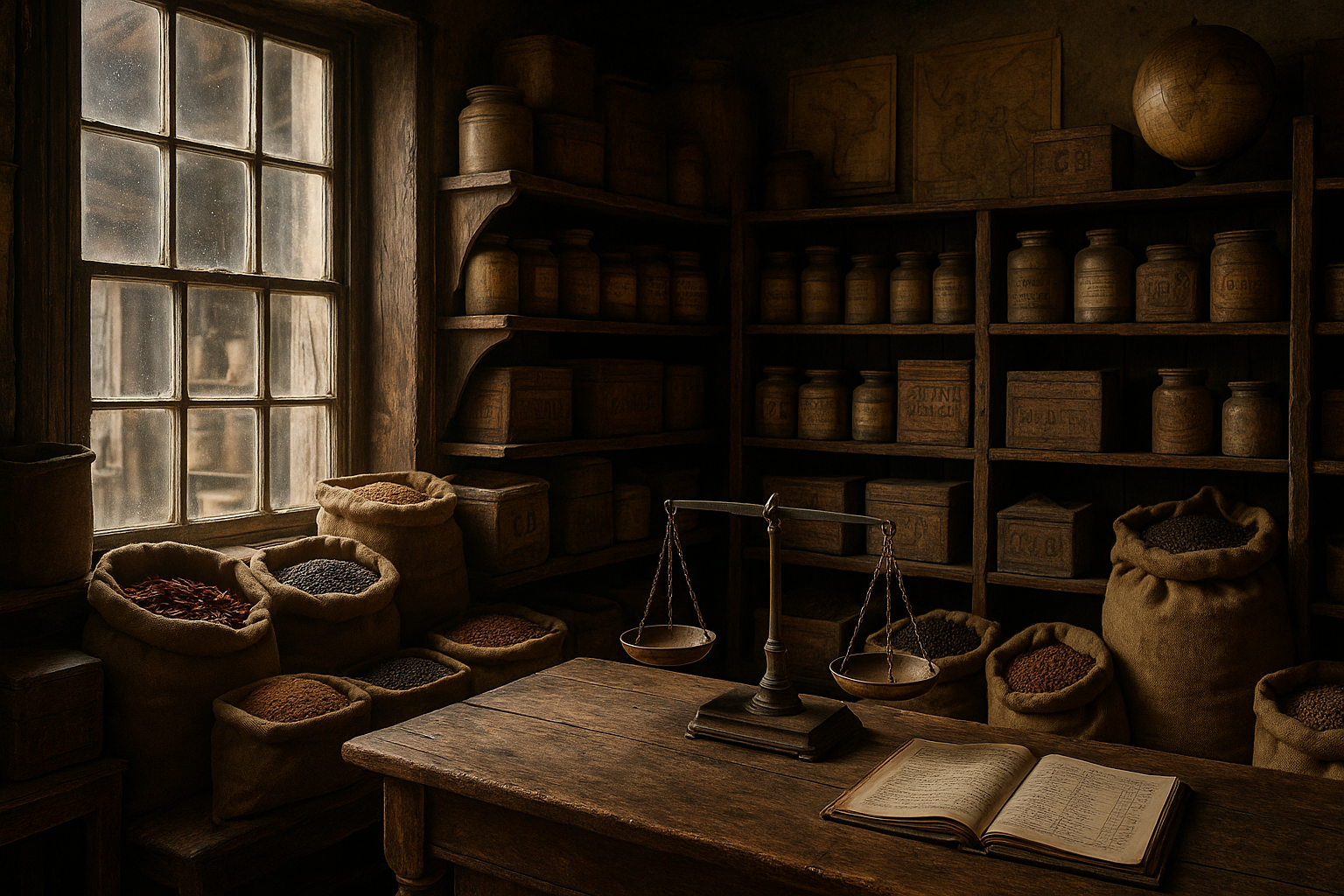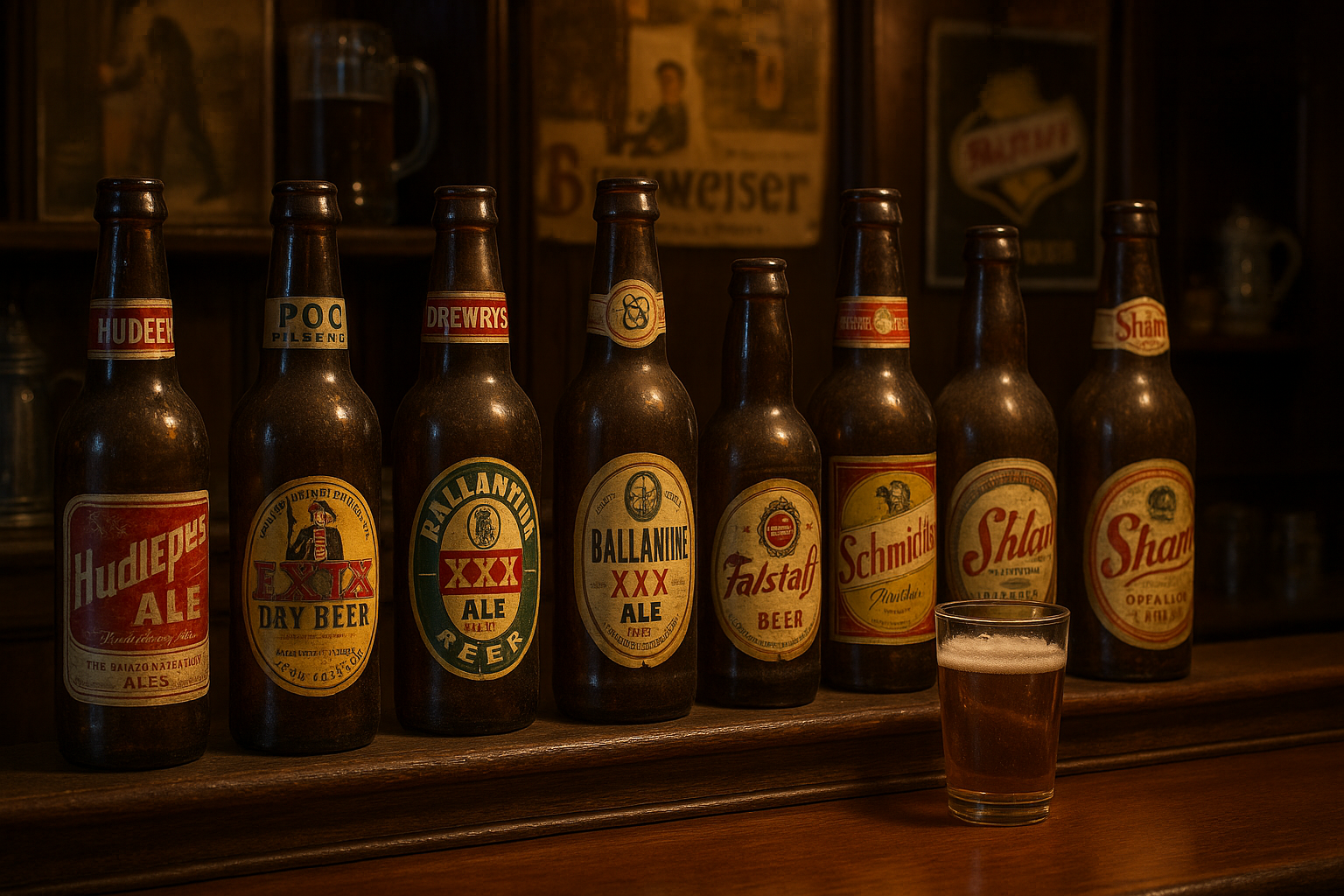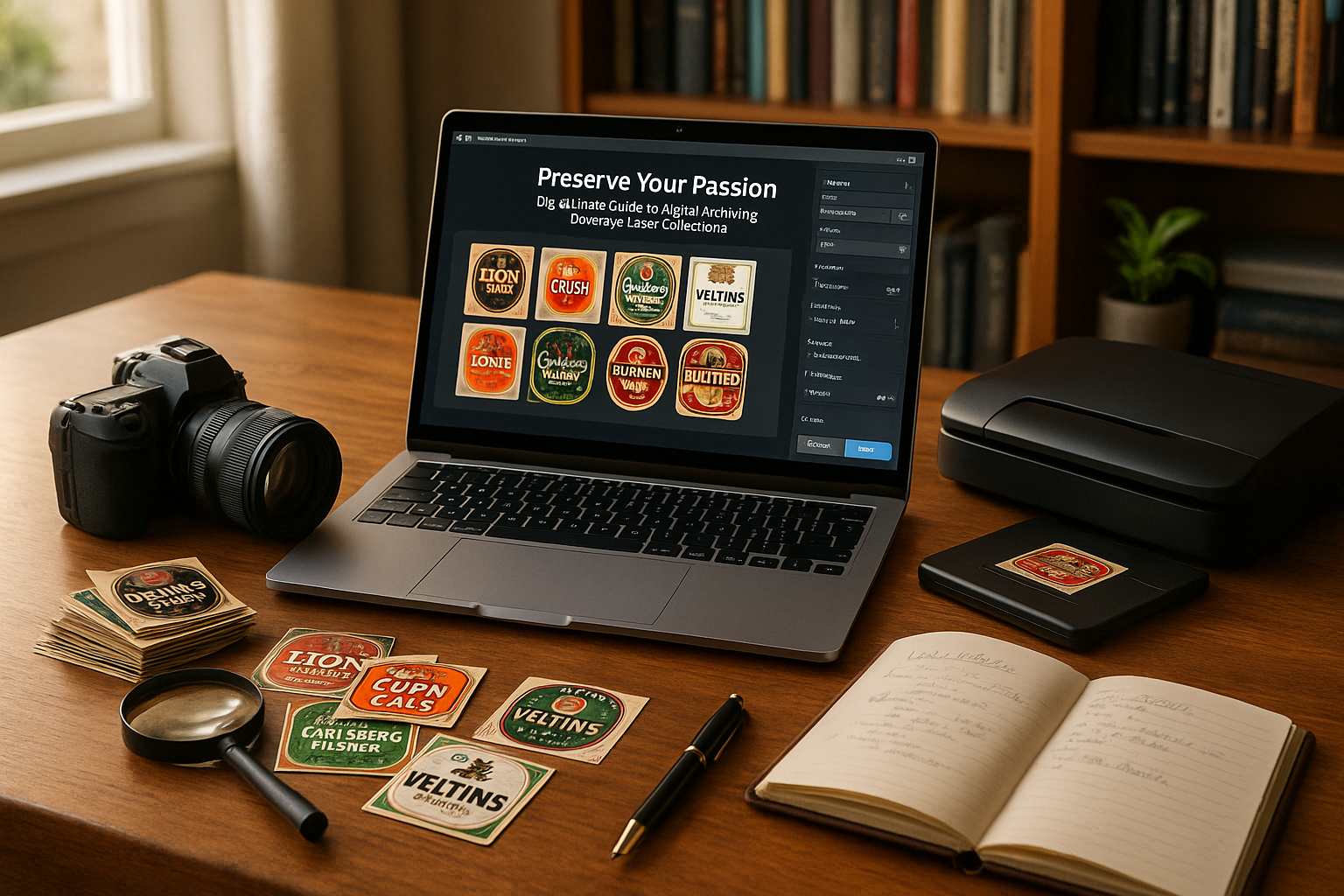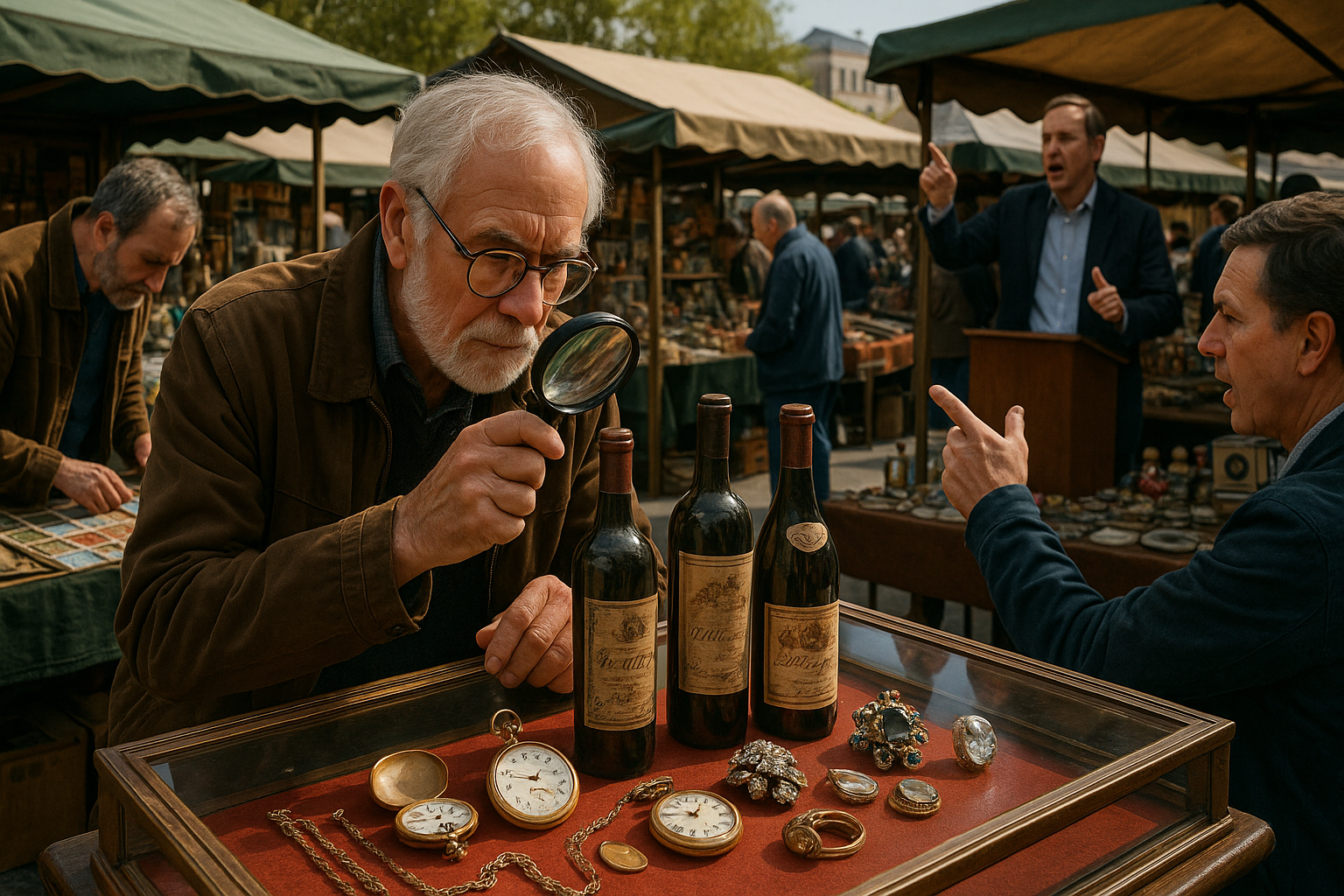In the world of vintage collectibles, few things hold as much allure and mystery as the labels that adorn them. These small yet significant details not only authenticate an item but also tell a story of its past—where it came from, who made it, and the era it represents. However, as the market for vintage collectibles has grown, so has the prevalence of counterfeit and reproduced labels, designed to deceive even the most discerning of eyes. Whether you’re a seasoned collector or an enthusiastic newcomer, the ability to distinguish between genuine and fake labels is a crucial skill that can protect your investments and enhance your appreciation for these timeless treasures. 🕵️♂️
In this comprehensive guide, we will embark on a journey to unlock the secrets of spotting fake or reproduced vintage labels. We’ll begin by exploring the historical context of these labels, delving into the evolution of printing techniques and materials used over the decades. Understanding the authentic characteristics of vintage labels is the first step in learning how to identify imitations. From there, we’ll move on to discuss common red flags and deceptive practices employed by forgers, including telltale signs such as inconsistent typography, anachronistic materials, and suspiciously pristine condition. Armed with this knowledge, you’ll be better equipped to scrutinize labels with a critical eye.
Finally, we’ll provide practical tips and tools for collectors and enthusiasts to refine their label-spotting skills. This includes advice on utilizing technology, such as digital magnification and online databases, as well as fostering a network within the collector community for shared insights and resources. By the end of this guide, you’ll not only be able to confidently discern the authenticity of vintage labels but also gain a deeper appreciation for the intricate artistry and historical significance they represent. So, prepare to embark on a detective’s journey through the world of vintage collectibles—where every label has a story, and every story holds a secret waiting to be uncovered. 🕰️🔍
Understanding the Basics: What Defines a Vintage Label?
For collectors and enthusiasts, vintage labels represent more than just a piece of paper or fabric; they embody a slice of history, encapsulating the design trends, cultural nuances, and commercial branding of their era. Recognizing what makes a label genuinely vintage involves understanding both its aesthetic elements and its historical context. The appeal of vintage labels is often rooted in their ability to evoke nostalgia and appreciation for craftsmanship that may seem lost in today’s digital age.
Labels from different decades carry distinct features, from the typography and color schemes to the materials used. For example, labels from the early 20th century often showcase Art Nouveau or Art Deco influences, with intricate designs and elaborate fonts. As you move into the mid-century, a shift towards more minimalist and bold graphics becomes apparent, reflecting the societal changes of the time. Understanding these characteristics helps in identifying the period a label might belong to, offering insights into its authenticity.
Furthermore, the materials used in labels can offer significant clues. Older labels were often printed on thicker paper or fabric and might have used printing techniques such as letterpress, which leaves a distinct impression that is difficult to replicate with modern printing methods. These tangible elements can serve as a critical touchpoint for collectors in verifying the vintage nature of a label. As you delve into collecting vintage labels, familiarize yourself with these key components to enhance your discernment skills.
Identifying Authenticity: Techniques for Spotting Fake Vintage Labels
The market for vintage labels, much like other collectible items, has seen an influx of reproductions and fakes. As demand rises, so does the incentive for forgeries. Spotting a fake requires a keen eye and a bit of detective work. One effective method is to examine the label’s condition and wear. Authentic vintage labels will typically show signs of aging, such as yellowing, fading, or slight brittleness. Be wary of labels that appear too pristine, as they may be reproductions made to look old.
Another technique involves scrutinizing the print quality and typography. Vintage labels often employed specific fonts and printing techniques that are distinctive to their time. A label with inconsistent printing, modern fonts, or anachronistic design elements can be a red flag. Additionally, the use of a UV light can reveal modern printing methods, which often fluoresce, unlike older inks that do not react under UV light. Collectors should equip themselves with such tools to assist in authentication.
Furthermore, research is crucial. Knowledge about the brand’s history, including logos, branding changes, and known designs from specific periods, can be invaluable. Collectors often maintain a database or catalogue of genuine labels, which serves as a reference point when evaluating new acquisitions. This background information, combined with physical inspection, greatly aids in distinguishing authentic vintage labels from counterfeits.
Comparative Analysis: Original vs. Reproduced Labels
| Characteristic | Original Vintage Labels | Reproduced Labels |
|---|---|---|
| Material Quality | Thicker paper or fabric, may show signs of wear | Often uses modern paper, feels newer |
| Print Technique | Letterpress or traditional methods, with depth in print | Digital or offset printing, flat and uniform |
| Color Fading | Natural fading, consistent with age | Artificial aging or inconsistent fading |
To see these differences in action, I recommend watching the video below that provides a visual guide to identifying genuine vintage labels:
Spotting Fake Vintage Labels – Collector’s Guide
The Collector’s Toolkit: Essential Tools and Resources
Building a toolkit is essential for any serious collector of vintage labels. This toolkit includes both physical tools and resources that enhance your ability to authenticate and appreciate vintage labels. A magnifying glass or jeweler’s loupe is fundamental, allowing for a detailed examination of the label’s printing, paper texture, and any signs of aging. These tools help identify minuscule details that the naked eye might miss, such as tiny imperfections in print or the layering of inks that signify traditional printing methods.
Another vital tool is a UV light. As mentioned earlier, many modern inks will fluoresce under UV light, while older inks generally do not. This simple test can quickly reveal the authenticity of a label. Including an archival storage solution in your toolkit is also crucial. Proper storage not only preserves the label’s condition but also protects it from environmental factors like humidity and light, which can accelerate deterioration.
In terms of resources, a comprehensive library of reference materials is invaluable. Books, online databases, and forums dedicated to vintage labels can offer insights into specific brands, design trends, and historical contexts. Engaging with a community of fellow collectors can also provide support, advice, and opportunities for acquiring new pieces. Many collectors participate in online groups or attend local meet-ups and conventions, where they can share knowledge and experiences.
- Magnifying Glass or Jeweler’s Loupe
- UV Light for Ink Testing
- Archival Storage Solutions
- Reference Books and Online Databases
- Community Engagement (Forums and Conventions)
Preserving History: Caring for Your Vintage Label Collection
Preserving a collection of vintage labels is as important as acquiring them. Proper care ensures that these historical artifacts remain in good condition for future generations. Begin with understanding the environment in which your labels are stored. Labels should be kept in a cool, dry place with stable temperatures and low humidity. Fluctuations in these conditions can cause the paper or fabric to expand and contract, leading to damage over time.
Investing in archival-quality materials is another critical step. Use acid-free folders, sleeves, and boxes for storage, as acids can cause paper to deteriorate. Handling your labels with clean, dry hands or wearing cotton gloves can prevent oils and dirt from your skin from transferring onto the labels, which can cause long-term damage. Regularly inspecting your collection for signs of deterioration allows you to address issues promptly.
For serious collectors, documenting each label in your collection can enhance its value and your enjoyment. Keep detailed records of each item’s provenance, acquisition details, and any relevant historical information. This not only aids in authentication but also enhances the narrative of your collection. As you continue to grow your collection, these records can serve as a legacy, offering insight into the significance and stories behind each label.

Conclusion
Unlocking the secrets behind identifying fake or reproduced vintage labels is not just an art; it is a journey into the rich tapestry of history, craftsmanship, and personal dedication. Throughout this guide, we have delved deep into the nuances that distinguish authentic vintage labels from their counterfeit counterparts, providing collectors and enthusiasts with the tools they need to hone their skills and protect their investments.
We began by exploring the historical context and significance of vintage labels, understanding their role not just as identifiers but as pieces of art that reflect the aesthetics and technological capabilities of their respective eras. This foundational knowledge is crucial as it provides the context in which these labels were created and distributed. The allure of vintage labels often lies in their ability to transport us back in time, offering a tangible connection to the past. Understanding this connection is the first step in appreciating the true value of these collectibles.
In dissecting the visual and tactile elements of vintage labels, we emphasized the importance of paying attention to details such as typography, color palettes, and materials used. Authentic labels often have distinctive characteristics that can be attributed to the printing technologies and design trends of their time. For instance, letterpress printing or lithography would leave specific marks or textures, which are often absent in modern reproductions. Collectors are encouraged to familiarize themselves with these techniques as they can be a reliable indicator of authenticity.
Furthermore, we discussed the pivotal role of provenance and documentation in verifying the authenticity of a label. Provenance provides a traceable history of the item, offering insights into its origin, previous ownership, and any changes it may have undergone. Reliable documentation, such as purchase receipts or certificates of authenticity, adds another layer of credibility, reducing the likelihood of falling prey to counterfeit goods.
In recognizing the red flags that often accompany fake or reproduced labels, we highlighted common pitfalls such as inconsistent wear and tear, unusual glossiness, or modern materials that are not consistent with the age purported by the seller. These indicators, coupled with an understanding of historical accuracy, can help collectors make informed decisions. The community of collectors is also a valuable resource; engaging with other enthusiasts can provide additional insights and validation.
The digital age has revolutionized the way collectors gather information, and we cannot ignore the benefits of online resources and communities. Websites and forums dedicated to vintage labels offer a platform for sharing knowledge, discussing trends, and seeking advice from seasoned collectors. Utilizing these resources, alongside physical inspections, can greatly enhance one’s ability to discern genuine items from fakes. Websites like The Vintage Label Resource and Collectors Weekly provide invaluable information and are excellent starting points for both novice and experienced collectors.
As we conclude this comprehensive guide, it is essential to reinforce the importance of continuous learning and curiosity in the realm of vintage label collecting. The thrill of discovering an authentic piece and the satisfaction of adding it to one’s collection is unparalleled. Yet, with this passion comes the responsibility to maintain the integrity of the collecting community by sharing knowledge and helping others learn from our experiences.
We encourage you to take what you have learned and apply it not only in your personal collecting endeavors but also as part of a broader effort to preserve the history encapsulated in these labels. Share your experiences with others, participate in forums, or even start a local collectors’ group to foster a community of like-minded individuals. Engaging with others not only enriches your own understanding but also contributes to a collective effort to safeguard the authenticity of vintage labels for future generations.
Your journey in this fascinating field is just beginning. With the insights and tools you’ve gained from this guide, you’re well-equipped to navigate the world of vintage labels with confidence. Whether you’re purchasing your first piece or adding to a growing collection, remember that each label tells a story—a story that you are now part of. 🌟
Feel inspired to share this guide with fellow enthusiasts and encourage them to embark on their own journey into the world of vintage labels. Comment below with your thoughts, experiences, or any additional tips you might have discovered along the way. Let’s continue this conversation and collectively build a robust community of informed and passionate collectors. 📚🔍
Toni Santos is a visual poet and botanical dreamweaver, archiving the ephemeral beauty of dreams through nature’s delicate language.
In his artistic universe, every petal, vine, and root becomes a memory—an echo from the subconscious—preserved in time like pages from an ethereal journal. Toni treats plants not just as living beings, but as dream-symbols: vessels of forgotten feelings, silent wishes, and secret stories waiting to unfold.
His work is rooted in the belief that nature holds the vocabulary of dreams. Through botanical compositions, symbolic floral creations, and enchanted visual studies, he gives form to the unseen — the moment between sleep and wakefulness, where memory fades and imagination begins.
As the visionary behind Vizovex, Toni curates collections that feel like fragments of a dreamscape: moss-filled glass jars, mythic flowers, ancient botanical symbols reimagined. These creations invite you to explore your inner worlds and reawaken your sense of wonder.
His work is a tribute to:
The dreamlike language of plants and natural symbols.
The quiet messages found in forgotten moments.
The art of recording the soul’s memories in organic form.
Whether you’re a seeker of meaning, a lover of myth, or someone who drifts between the symbolic and the real, Toni welcomes you to explore an archive of dreams — one petal, one relic, one timeless whisper at a time





